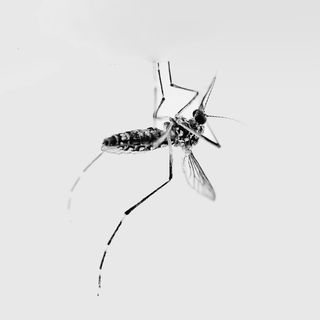Climate change is combining with Big Food capitalism to spread obesity and undernourishment globally. It’s a doomsday trifecta that experts say is the “greatest threat” to human existence.
The direct fallout of the phenomenon will be on children, who are increasingly growing up undernourished, obese,or both, according to “The Global Syndemic of Obesity, Undernutrition and Climate Change: The Lancet Commission” report released earlier in January.
In India, 38 percent of children under the age of five are too short for their age, indicating chronic undernutrition; 28 percent of children are too thin for their height, 36 percent are underweight and 58 percent have anemia, according to national statistics released by the Ministry of Health and Family Welfare for 2015-16. Childhood undernourishment also increases chances of adult obesity and associated chronic health problems such as cardiovascular issues and diabetes, the report added.
On the other hand, India has the second largest number of overweight and obese children in the world, with a prevalence of 19.3 percent, according to “Epidemiology of childhood overweight & obesity in India: A systematic review” published in the Indian Journal of Medical Research. While an increasing number of countries have a rising population of obese and undernourished children, there also exists what doctors call a ‘thin fat child,’ who is simultaneously obese and undernourished.
Related on The Swaddle:
With expanded access to junk food, which is replacing healthy, nutritious options in people’s diets, children are increasingly operating without adequate nourishment, while consuming copious amounts of fatty foods. This affects the body mass index of children, who grow up with inadequate muscle mass, due to low intake of protein and other nutrients, but high levels of fat.
“The prevailing business model of large international food and beverage companies that focus on maximising short-term profits leads to overconsumption of nutrient-poor food and beverages in both high-income countries and increasingly in low- and middle-income countries,” said Dr. Richard Horton, editor-in-chief of The Lancet, in a statement released by the organisation. “The coexistence of obesity and stunting in the same children in some countries is an urgent warning signal — both will be exacerbated by climate change.”
At the same time, worsening climate conditions are going to cause “huge upheavals in agriculture, in the microorganisms that will grow in the future; it will affect the viability of healthy food, its nutritious value, its quality and it will get more pricey,” said Dr. Shifalika Goenka, a professor with the Public Health Foundation of India, one of the commissioners of the Lancet report.
Big Food companies are poised to cash in after years of having invested considerable money into influencing the food habits of consumers, and after years of contributing to climate change in their manufacturing practices; mass food production is responsible for 25-30 percent of greenhouse gases, according to the Lancet report.
Increased government regulation of the industry is the only thing likely to check this progression, the report says.
Related on The Swaddle:
For example, there should be a ban on telemarketing by fast food companies during daytime hours when children watch television, Dr. Goenka recommended. Food labels, which are highly technical and inscrutable to the average consumer, should be simplified and color coded, which help the common citizen make informed choices, she added. Making clean potable water available and accessible will help eliminate the consumption of sugary beverages and bottled water, she said.
Adopting a holistic approach that addresses the common drivers of climate change, undernutrition and obesity — such as national policies regarding land use, agriculture, transportation systems and urban design — can help slow the alarming trends of health and environmental deterioration, according to the report. We need wide pedestrian paths, lush green trees lining sidewalks and motorways, multiple active transport lanes and a safe and well-connected public transport system that allays the effect of unhealthy food habits, Dr. Goenka recommended.
“It is high time we stop blaming individuals [for their health] and start looking at the environment that is causing it,” she said. “Our health is a function of where we live. The rich will have their air conditioners and their private gardens. Of all, the poor will suffer the most.”
600 million Indians could bear the brunt of high temperatures due to climate change by 2050, a World Bank report delineates. It adds that 148 million Indians will have to reside in “hotspots,” which will face a critically depleted water supply unable to satisfy ever-growing needs; low crop yields; and more frequent and serious health problems in adults and children. The report also estimates that climate change could start costing India 2.8 percent of the country’s Gross Domestic Product.
“Any development should be for a happy life,” Dr. Goenka said. “If you are creating an environment for more depression and bad health, then what is the point?”




